The skating season is over
The skating season 2024-2025 is over. Spotty ice, good skating, zero plunges.
By now, we can say for sure that the skating season is over in Helsinki. I ended up packing my gear to the attic, and fetching it back twice. I've packed it once again and about to take it to the attic. The next time to get it down is many months away.
In this post, I'm going to take stock of the season.
Do you want my latest adventures into your inbox? Do subscribe! It's going to be one, at most two messages per month.
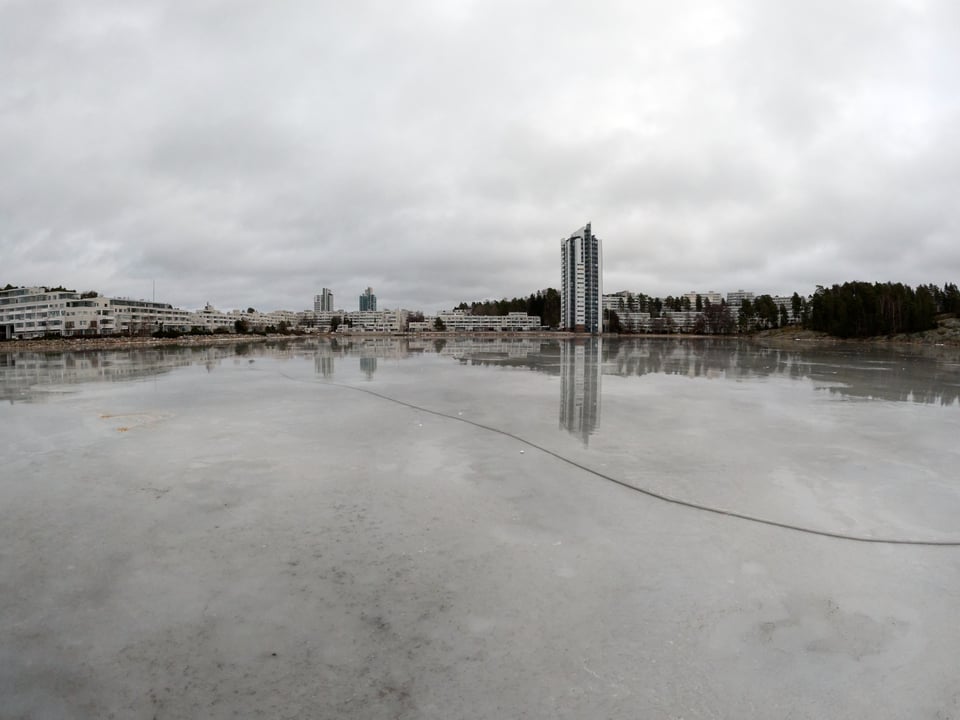
The season overall
The sea ice in Helsinki was not great. The previous season was amazing: there were multiple weeks of thick high-quality ice on the sea. This year was nothing like that. There just wasn't much ice, and what was there was spotty.
On the other hand, the lakes were in good condition. In Nuuksio, I skated on Pitkäjärvi twice and tried to skate on the smaller lakes. In Kirkkonummi, I lakehopped around Meiko. Hiidenvesi in Lohja I visited twice and there was a trip to Bodominjärvi in Espoo, too. All of the lakes and many others had plenty of good ice and skatable days.
According to my accounting, I did 12 trips (four of them on the sea; nine of them in Uusimaa) and skated 238 km, plus a few tens of kilometers of technique practice.
I think I skated almost as much as was possible for me. There were a few skipped opportunities, but if I wanted to skate significantly more, I would need to buy a car. The sea shore in Helsinki is easy to reach by public transport but for the lakes, you pretty much need a car to go often.
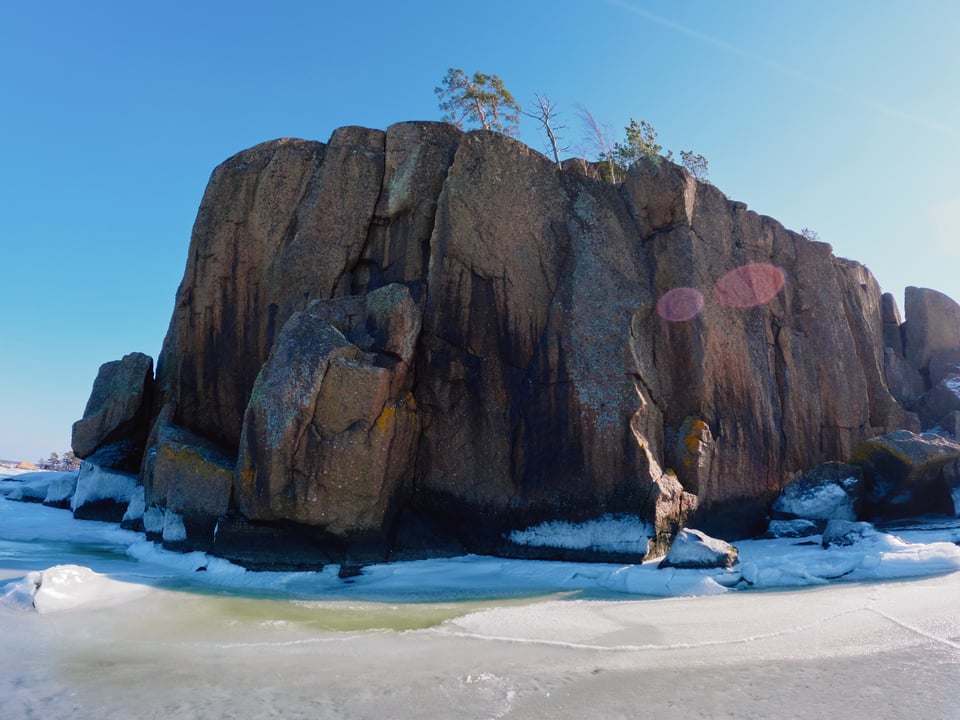
The most exciting moments
The most memorable skating moments for me were when we were on thin ice.
In late January, we skated with friends on Espoonlahti right before the ice would melt. We had started from Kivenlahti but on our way back, the ice was so thin - often just one hit with the pole would be enough to be pierce it - that we had to bail to the Soukka beach.
In late March, we skated with another group of friends on Hiidenvesi, again, right before the ice would melt. Every push with the skate would make the ice crack. In a thin area, there was a loud bang from the cracking ice and you could feel and hear how the shockwave is echoing back and forth around the lake and the ice is wailing for many seconds.
In both cases, we probably were there on the last skateable day - possibly the last skateable hours. The ice would turn first too soft to skate and then too thin.
I'm not a thrill-seeker, but I do seek outdoors adventures that challenge me and allow me to learn. Getting to be on sketchy ice was an exciting opportunity.
I did not plunge this season (outside of a practice session) although I was on one trip where somebody else plunged. Does that mean I took too few riks? More risks, more skating. It's not fun to plunge, though.
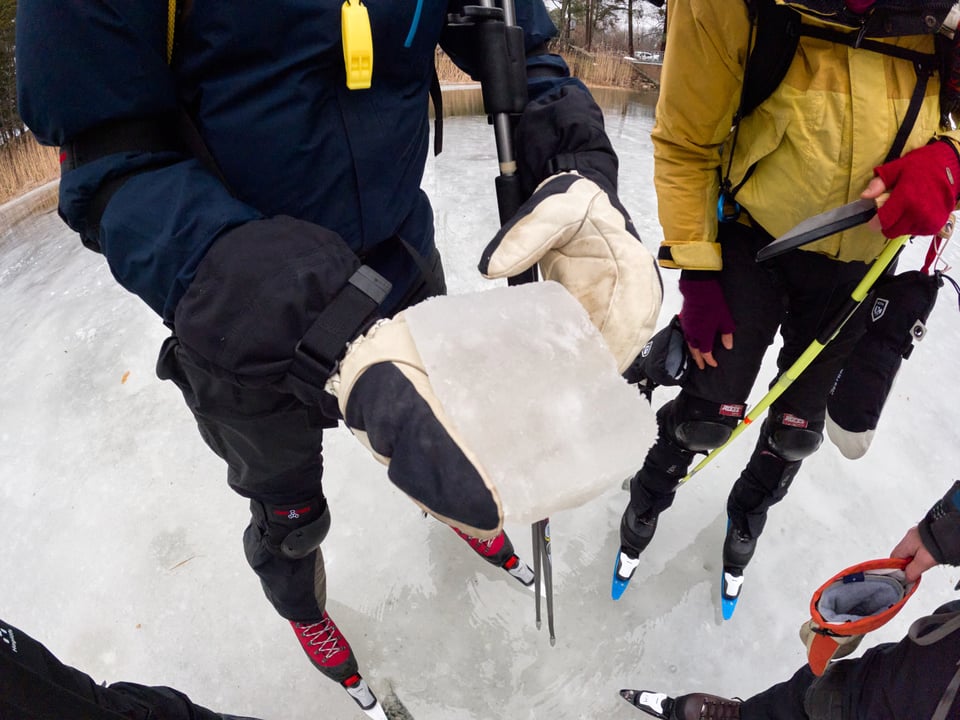
Self-organized touring course
I'm a member of the tour skating club Suomen retkiluistelijat and they organize a omatoimiretkikurssi, a course for self-organized tour skating.
When you start tour skating and join the club, you start by going on the tours organized by the club. The next step is to take this course. It's a chance to learn how to plan and execute a tour yourself.
We had theory lectures about ice safety and ice formation, including how to use satellite images to find skatable ice. The practice sessions were about inspecting the ice and plunging. We split into groups and organized a tour using the skills we had learned. Those who wanted also got a chance to act as assistant leaders on the club tours.
The course was a lot of fun! I had learned most of the skills during the previous season, so there wasn't that much new to me, but I had good time in every session. I had a few great tours with the people that I got to know on the course, too.
The course is useful if you want to learn to be a self-sufficient skater, but even if you already have the skills, it's an opportunity to meet new people to skate with. These go hand-in-hand; if you don't have a group with whom to go out, it's tough to develop the skills.
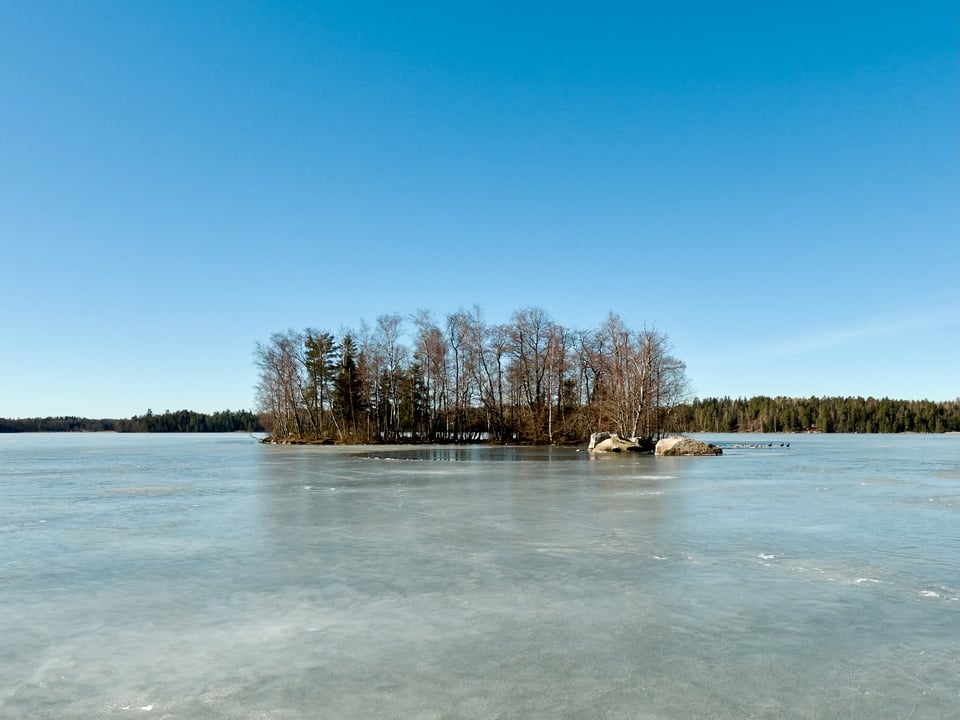
Skating technique
Early in the season I attended two technique practice sessions organized by the club. They were a big success for me. One or two sessions is not enough to learn to skate perfectly, but I got the right idea about what the good technique is supposed to be like. Then I was able to focus on it whenever there was easy skating in the tours. My skating became much more efficient during the season.
I started practicing crossover, but I didn't learn them yet. I can take a few steps to left but taking steps right feels impossible. Next season, then!
I attended a plunging practice session. I've practiced it once before, and I fallen through lake ice once while walking, so I already knew what it feels like. The biggest question for me was whether my gear was working.
It worked perfectly! The backpack was floating me, it was easy enough to use the ice claws, and the dry clothes in the backpack stayed dry and they kept me warm while everyone else in the group was going through the practice.
The only snag was that I had made a knot in the throwline to keep it from tangling while I transport it. I had forgotten to open it, or the existence of the knot. When I threw it, the bag flew about half a meter and flopped on the ice.
I then got to open the knot while wearing the gloves and floating in the water. It was easy enough but I promise I will not be knotting the throwline again.
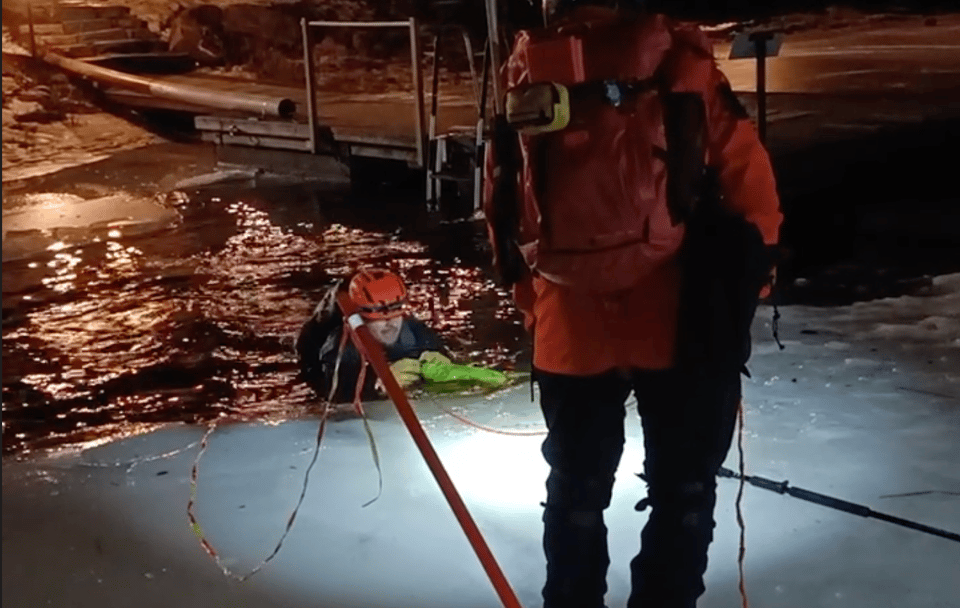
Me in the icy water trying to open the knot in the throwline. Good times! Photo: Joel Kaasinen.
Lessons learned
After all the lectures, practice, and tours, I have to admit that I was wrong about the quality of the ice many many times.
There's a lot of information and rules of thumb about how to read the ice, but you need to develop a feel for it yourself. Look at the weather forecasts, satellite images, tour reports, ice observations. Go out there and inspect it yourself. The feel will develop. (And be ready to take a plunge.)
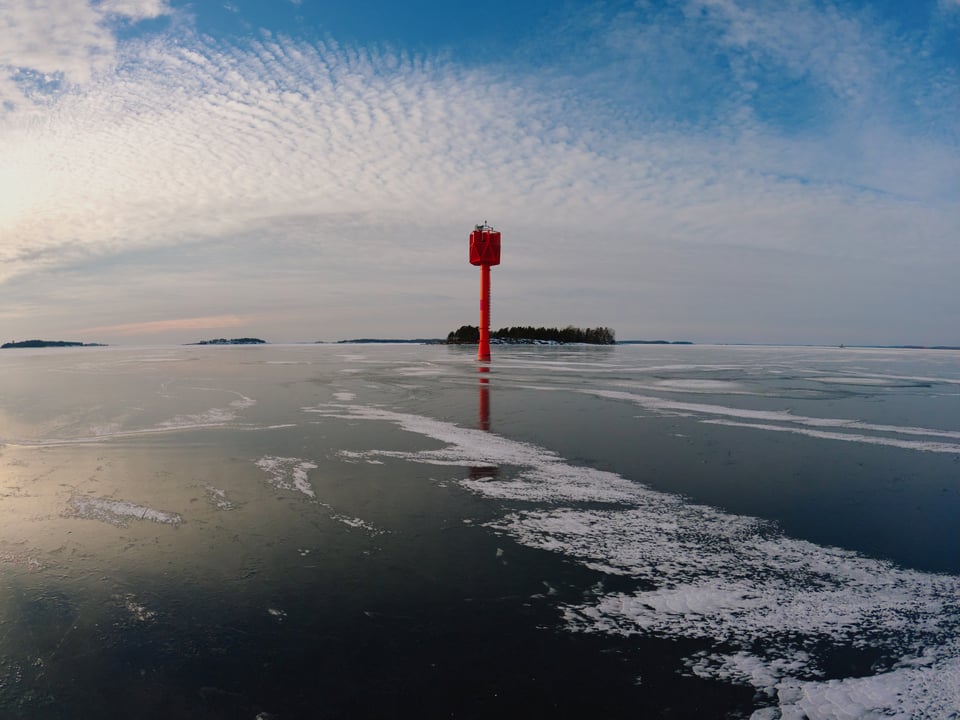
Conclusion
I take my tour skating gear to the attic. I'm now focusing on the nascent kayak and outdoors climbing seasons.
Photos by me unless stated otherwise.